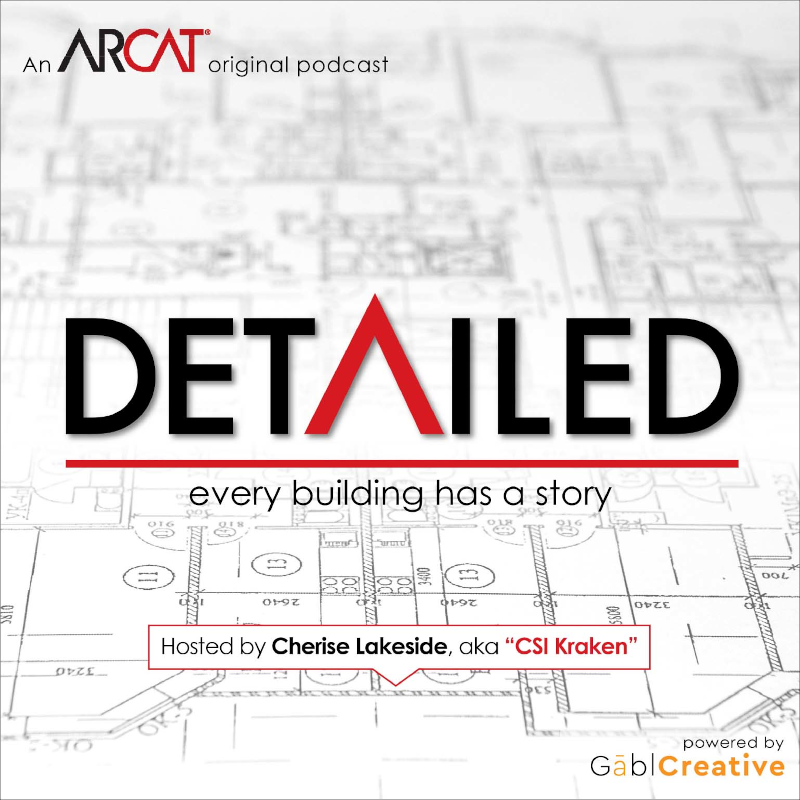|
Contributed by Margaret Fisher Submitted Title 'Waaaaay Too Much Information!' Time is Neither Unlimited Nor Elastic
As the company I work for gets invited to bid on projects around the country by over 560 GC’s, I see a lot of these. As you might imagine, these forms ask a lot of the same questions. In today’s world of “every second counts” and lean measures, I am all about eliminating redundancies. So about 5 years ago, I started collecting the questions being asked on these forms and compiled ONE big “Standard Pre-Qual Info” document. Today, there are about 200 questions on it. I keep that updated quarterly and when we get a request to complete yet another pre-qual form, I send this instead and tell them our president will make an appointment with their financial person to review OUR financial info in a closed door, one-on-one meeting. We do not leave the financials behind. We are not alone in this practice. In 99% of those cases, they never bother to set up this appointment. And 99% of the GC’s I send this to say I’m not alone and that works just fine. It’s the ones that insist on online completion because of some kind of (meaningless) score that gets computed that insist on this. The info is not better it just eats up a ton of time. Time one could use doing some actual work that would be beneficial to the quality completion of a project. What happens if we don’t fill them in? We get the job anyways. Testing This Out So let’s build this common scenario. Say a typical project is going to require the work of 15 trades. 1 x 15 = 15. Each CSI Section is bid by a minimum of 3 subcontractors, but could be bid by 8-10 or more. So, let’s say 5 for each trade. 5 x 15 = 60. Each prequal form is 10 pages minimum. 60 x 10 = 600 pages of pre-qual info to review. Whew! That’s a lot to analyze. So I asked a great CSI, AIA brilliant friend of mine to lunch one day to discuss this phenomenon. He does get involved in the subcontractor selection process and is very keen to have high quality skilled individuals on his projects. I asked him how he has time to read 600 pages of all this info that 60 subcontractors submitted. He says he gets the info but doesn’t read them. I asked, “How much of this info is used to make the selection of the subcontractor?” He said, “None of it.” I needed a moment to let that sink in. This is staggering because we’re talking about 60 companies wasting 10 hours apiece on something that isn’t used. (And people wonder why productivity is so low. Probably partly because of the lure of social media, etc. but, also because of irrelevant activities like this.) So I asked, If the GC is insisting on this and if it isn’t used, what DO you use to make the decision instead? He said, he does what everyone else does; look at the prices, remove the proposals that are not realistic, see who’s including the most scope, think about who they used recently, thought about how the project went and chose the one they liked working with.” All these business questions don’t help him decide who works on his projects. So Who Cares? After a delightful lunch, I dropped him back at his office and we went our separate ways but, I had to ponder the remaining question. What is actually NEEDED to determine which subcontractor is right for the job? You would have to have qualification questions about the tradesmen skill itself on the questionnaire. This has not happened. I then went to the office of the Executive Vice-President of a large trade organization that is baffled by this whole thing as well. After about 2 hours of discussion we came to this: Get a room full of the estimators of all the GC’s in the area in one room and give them a single sheet of paper and a pencil. Tell them they have to determine which of 5 Subcontractors in one trade will be given a contract for that trade. They can only ask ONE question. What would the ONE question be? What is the info that assures them the subcontractor has the skills to do the job as specified? I think if you took the top 5 answers they come up with, you’d have the makings of a new pre-qual form that works.
1 Comment
Contributed by Margaret Fisher Submitted Title 'Waaaaay too much information!' The Prequalification Form Gone Rogue
Ever since man stood up and decided he wanted something to cover the opening of his cave, the question exists, “Who can I rely on to do this work?” It was the dawn of the pre-construction qualification process. Back then, word of mouth or whoever was standing nearby got the job. Things stayed pretty much the same until just a few short decades ago. As the availability of more folks to do the job appeared on the scene, it became necessary to try to find some way to pick just one. But, what should the criteria be? So some GC’s, not all, started coming up with forms that ask fairly routine questions including your companies vital stats, such as your location, number of employees, last year’s sales, one or two recent projects that they can check out if they are so inclined, etc. This seems reasonable. In the end, the GC most often thought about who they worked with last and how it went. If it was a pretty good experience, they went with that gut feeling, the comfortable choice. “More” Isn’t Better; it’s Just More Today, we are in pre-qualification hell. It is not unusual to be asked to complete a 10-17 page form that takes a minimum of 10 hours to complete. More than one full work day for some. Smaller trades with less than 25 employees probably do not have one person who can afford to dedicate one full day completing these forms. If they are to be completed online, this adds another layer of complexity and additional time. In some cases, the forms cannot advance to the next page if you don’t have one answer at the ready and need to come back to it. Asking, Asking and More Asking . . . More and more subcontractors are now calling into question the very nature of some of these questions. The savvy subcontractor has brought prequalification questions to their attorney and accountant prior to completing forms. Generally, recommended by our attorney and our accountant, we do not answer some questions on manual or electronic. Basically, these would be the ones you wouldn’t ask in a hiring situation: Universally unacceptable to ask are questions regarding: Race, Religion, Marital Status, Gender, Sexual Orientation, Age, Military Involvement, Criminal conviction, Political Background, Ethnic Origin. HIPPA laws prohibit additional info sharing. Here are some examples gathered from various prequalification forms I have seen that are highly questionable:
That last one, well, if you think about it, how long would it take you to put that info together on just one project that you did 4-5 years ago? Now multiply that times perhaps 50 projects per year and multiply that times 5. As you can guess, it would take weeks to create that whole list and it would be about 125 pages long. How does this help anything? And I’m sure all those contacts they are asking for would not be pleased to find out we broadcast their phone numbers and email addresses on a form that could be viewed by who knows how many people. Again, how does ALL this prove skill or quality? That important information never comes up. Contributed by Cherise Lakeside With the ever increasing speed and change in projects and products every day, this blog could have been about anything. I chose to write about something that I am not hearing much about but that I am seeing with increased frequency. Something that really concerns me:
Where are the trained Specifiers? Am I the only one noticing a major shortage? Please understand that when I say “trained” specifier, I am referring to the folks that have had contract document, project delivery and specifications education. I am talking about the folks who are well versed in the latest and greatest in the products worlds and know exactly how to incorporate that information into the Contract Documents for the best possible project outcome. I am not talking about all the folks out there who write specs but do not have this very special and specific training. I am aware of a number of firms, in different locations around the country, who are having a very difficult time finding a specifier with this kind of training. Why is that? I will tell you what I think (which anyone who knows me would expect). Please note that there is no scientific research or analytics behind this blog. It is merely my observations in my local area and other parts of the country as a result of my involvement and connections in CSI. I think we dropped the ball and I think two recessions have taken a huge toll on Generation X. Trained specifiers are a rare breed as it is. I see tons of (untrained) people in our industry writing or editing specs and creating risk and potential conflicts in the process because they do not know what they are doing. The hard cold truth is that it is common in our industry to discriminate against the specs. It is common to treat them as less important than the drawings. It is common to see only cursory attention given to this CONTRACT document. This document that carries equal weight with the drawings in the eyes of the law. As a result, many firms will let anyone in the office dump information into the specs. That is a critical mistake and I have seen the fallout of this decision first hand. More than once. On the flip side of that coin, the firms that are smart enough to hire trained spec writers can’t find them. Finding a trained spec writer to hire these days is like looking for Bigfoot. Why are we so short in this valuable, absolutely necessary resource in Architecture, Engineering and Construction (AEC)? Here is my take:
So where does that leave us? That leaves us without qualified, trained spec writers to fill the shoes of the exiting Baby Boomer spec writers (which, honestly, is the majority of them). What is the consequence? Firms are letting anybody with a pen in their hand write specs and the conflicts on projects are increasing. Contributed by Elias Saltz At its January 26, 2016 chapter meeting, the Chicago Chapter of CSI was treated to a presentation by Ujjval Vyas, Ph.D., JD, entitled “From 19th Century Gentlemen to 21st Century professionals: Fiduciary Duties and the New Reality of A/E Practice.” What Vyas outlined during this talk amounts to a complete sea-change in the way architectural services are delivered. The “New Reality” Vyas presented isn’t reality yet but he demonstrates that it is coming about as the big insurance companies realize that his work has been thoroughly researched and has detailed and consistent logic and precedent. Once insurers are fully on board, architects will require an abruptly different mindset when it comes to their work. Licensed Learned Professionals There is a category of professional that includes doctors, lawyers and accountants that are all similar to one another in significant ways. They operate with state-granted monopoly (through licensure), their work involves significant financial or personal risk to their clients, and they enjoy a significant knowledge asymmetry between themselves and their clients in their areas of expertise. [1] Attributes for Some Licensed Learned Professionals [2] As indicated in this chart displayed by Vyas during his presentation, architects share numerous attributes with the other licensed learned professions, but architects somehow have not operated under the assumption that they have a fiduciary duty to their clients and instead use a contractual model usually based on AIA Contract Documents and/or professional liability tort notions based on around “standard of care.” I acknowledge my own lack of education around these complex concepts and have tried to make sense of them as best I can in order to communicate them here, but I’m certainly inaccurate in some measure of the specific detail. So what makes design professionals different from other licensed learned professionals in terms of fiduciary duty? In order to address this question, it’s first important to understand what is the fiduciary duty. What is the Fiduciary Duty? An excellent definition of fiduciary duty has been provided by Robert H. Sitkoff: "The law tends to impose fiduciary obligation in circumstances that present what economists call a principal–agent or agency problem. An agency problem arises whenever one person, theprincipal, engages another person, the agent, to undertake imperfectly observable discretionary actions that affect the welfare of the principal. Agency problems therefore arise not only in relationships governed by the common law of agency, but also in trust law, corporate law, and a host of other contexts.
Agency problems are pervasive because no one has the skills necessary to do everything for himself and because every undertaking has an opportunity cost. By delegating a task to an agent, the principal benefits from specialist service and is freed to undertake some other activity. But these benefits come at the cost of being made vulnerable to abuse if the agent is given discretion the exercise of which cannot easily be observed or verified. In such circumstances, the agent may be tempted to favor the agent’s interests when they diverge from those of the principal. The losses and other inefficiencies resulting from this misalignment of interests are called agency costs." [3] Contributed by Cherise Lakeside
Frankly, when the phrases above are uttered in my presence, they give me pause. Sometimes they give me fits. Sometimes my eyes bug out of my head in amazement. My response to these phrases is in direct proportion to the topic or issue at hand. In design and construction, we have many. The fact is that our buildings are getting more complex every day. The process has more shades of grey than ever. The roles and responsibilities are muddy, there are more players in the project and there are more hands in the pie. This complexity necessitates a more positive, collaborative working environment with more communication than we have typically employed in Architecture, Engineering and Construction in the past. In addition, we need to educate our professionals differently than has been typical historically. Gone are the days where an AEC professional slowly works their way through the phases of the project with years of experience in each area before moving to the next. Because of the current, and very real, generational imbalance – our young professionals are walking into a job expected to learn in many areas at once. This learning curve is often without an experienced mentor to guide them. The project complexity, speed of light changes in technology and our generational issues are contributing to the already longstanding issues we have faced for years in construction. Very real issues that we just can’t seem to fix. I could spend hours writing about things in our industry that we can’t seem to fix. Some examples? Lack of knowledge of Contract Documents, concrete moisture and flooring issues, roofing issues, lack of understanding of the differences between design-build and delegated design, proper building envelope design, poor communication and decision-making . . . the list could go on for miles. But I am not here to complain. That is not my style. I am here to offer a positive step in the right direction and I am going to ask you to do the same. Our biggest challenge comes from working in a bubble. It comes from only seeing things from the perspective of our own discipline. It comes from lack of knowledge of how other disciplines work and where there is risk. Each discipline has a different stake in the project and is often focused, fairly exclusively, on that stake. I offer that this kind of thinking actually hurts all involved more than it helps. I am not here to offer any easy answers. There is no such thing. I am here to say we need to work differently. We need to get our hands dirty. We need to learn how everyone on the project team works. We need to finally start talking to each other and working together! I have said many times that I choose CSI (click to check out the NEW CSIresources.org website) as my association of choice for two main reasons.
|
AboutLet's Fix Construction is an avenue to offer creative solutions, separate myths from facts and erase misconceptions about the architecture, engineering and construction (AEC) industry. Check out Cherise's latest podcast
Get blog post notifications hereArchives
March 2022
Categories
All
|







 RSS Feed
RSS Feed
